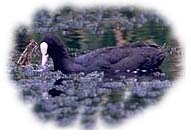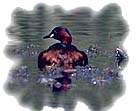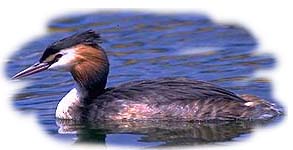| | | Roman Coastal Reserve | | | Zones | | | Coccia di Morto | | | Fauna |

| Among the most commonly seen aquatic birds, are the Coot (Fulica atra), the Cormorant, the Moorhen (Gallinula chloropus), the Little bittern (Ixobrychus minutus), and also various species of ducks, above all the Pochard (Aythya ferina) and the Wigeon (Anas penelope), though many other, more rare species can be found frequently. In the colder winter-seasons it is even possible to see marine ducks and, occasionally, gannets who, on these rare occasions, leave their normal salt-water fishing without, however, abandoning their spectacular dives. |
 |

|
On the residual dunes, in front of the Pond and
in the inner sandy area, the Little ringed plover (Charadrius
dubius) deposits its eggs in springtime while, in winter, numerous
Black-headed
gulls (Larus ridibundus) pass their days in the area, together
with Mediterranean gulls (Larus melanocephalus) and Little
gull (Larus minutus). Regular visitors, during the winter, are
the Great-crested grebe (Podiceps cristatus), the Little
grebe (Tachybaptus ruficollis) and the Red-necked grebe
(Podiceps nigricollis). The Grey herons (Ardea
cinerea) also likes to frequent the zone together with a contingent
of Little egret (Egretta egretta)
whose tendency to nest in the area is increasing.
Among the birds of prey in the area, it is easy to come across the Marsh harrier (Circus aeruginosus) and, in autumn, the Osprey (Pandion haliaetus). |
| Kestrels (Falco tinnunculus) and
Magpies
nest in the tall pine trees and are often in conflict with the ever-present
Hooded
Crows.
To be found in the greatest numbers are Blackbirds and other small birds such as the Chaffinch (Fringilla coelebs), the Goldfinch (Carduelis carduelis), Reed warbler (Acrocephalis scirpaceus) and the Cetti's warbler (Cettia cetti). In the open areas, Skylarks, Meadow pipits and White wagtails (or Grey wagtails, closer to the Pond) are always present, whereas, in the marginal areas, the chirping-noise of a thrush made from within the thick shrubs, can easily send the Song thrush (Turdus philomenus) into flight. |
 |